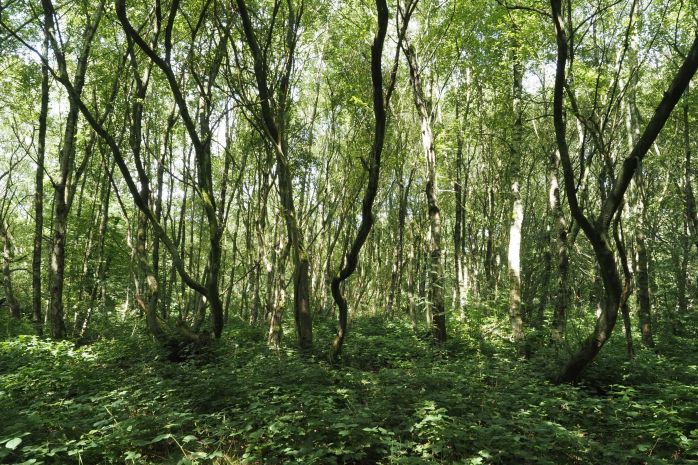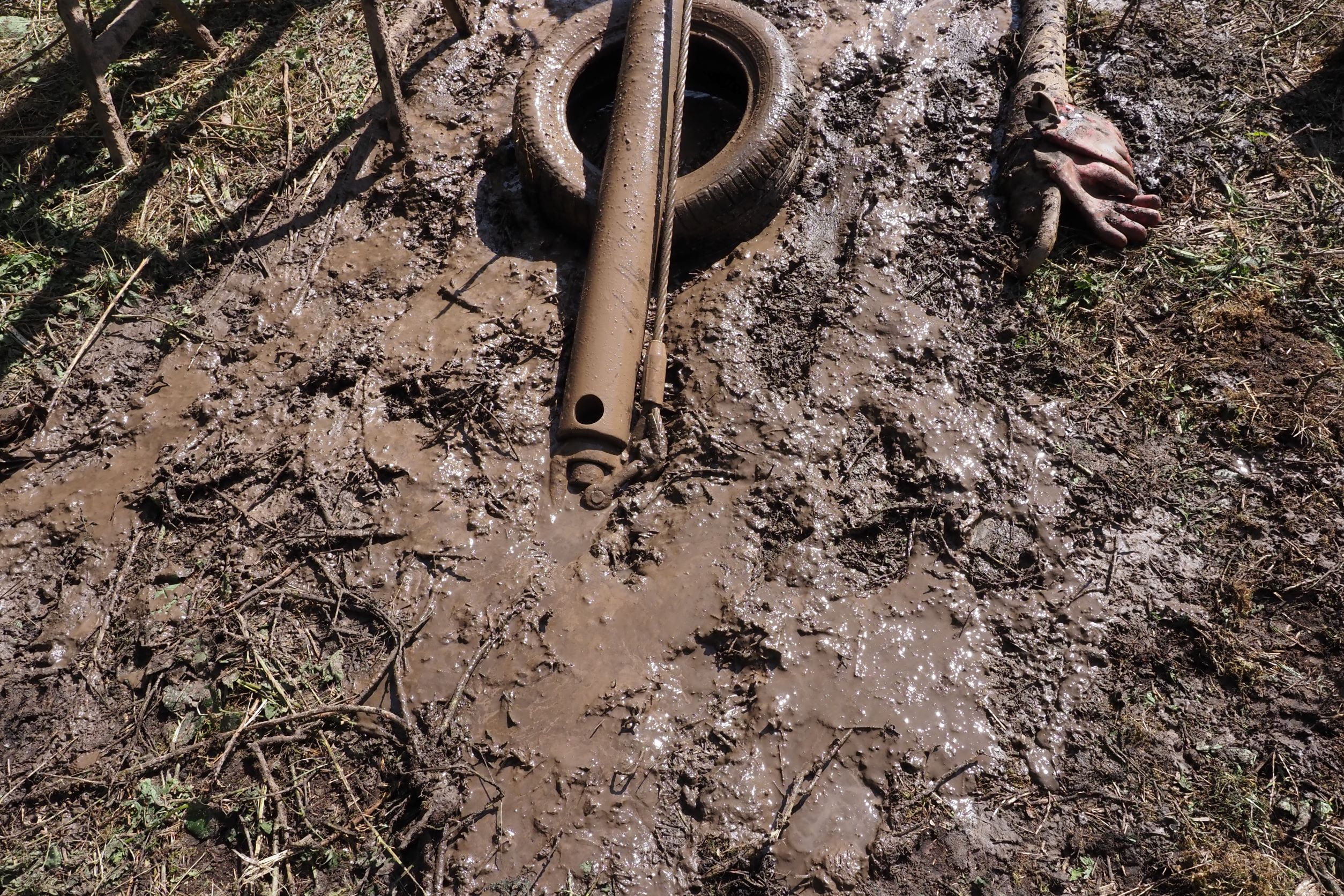Mark Cocker
'It takes a whole universe to make the one small black bird'
Danes Moss
A Letter to Cllr Sam Corcoran

Dear Sam Corcoran
I write to you about your support for a proposed 950-house development on the Danes Moss raised mire that interpenetrates Macclesfield town. Everyone says you are a conscientious, listening councillor, well respected and devoted to your area and constituents. Given that you are a member of a party which I supported for decades, I suspect we’d have much in common. On this issue, however, we’re divided. I urge you to reconsider and hope you will read this to understand why I think you should change your mind.
Danes Moss is an ancient raised lowland bog whose character has been in continuous development for more than 5,000 years. When Stonehenge was under construction, Danes Moss had long been in play as a living landscape. On first encountering it, I felt as if I’d left the Peak District and entered a bit of East Anglian fen, such is its radical otherness in terms of structure and atmosphere from anything local. It’s the mixture of herb-rich glades, the belts of trees lining the ditches on both sides and then the wonderfully wide grassland space at its heart. The wetness of the place is striking, giving that peat formations like this have fewer solids than milk.

The stands of sallow and birch are interesting, because these support the second and third most diverse invertebrate faunas of any British trees. Only oak is richer. Alder, the third component of the woodland at Danes Moss, is among the top ten. The recent mothing activities there are a revelation. They bear out what any naturalist feels on visiting Danes Moss: here is a really important wildlife area. In just 3-4 nights, moth recorders have produced a total of 279 moth species. Knowing what it takes to chalk up a big number like this – with such little effort – I’d hazard that Danes Moss will have more than 800 moth species, a third of the national total, which reflects its exceptional qualities.




(Here’s a tiny sample of the wonderful moths at Danes Moss)
Most remarkable is that all of this abundance lies not two miles from Macclesfield’s wonderful silk museum. Like the museum, Danes Moss is a feature of the inner townscape and is an amazing living resource to have at your civic heart. I can’t think of another northern town so blessed. I’m guessing you have seen how people go there for all kinds of recreational purposes. In lockdown it was vitally important, sparing the residents of Macclesfield’s centre from the sense of claustrophobia and entrapment that were a consequence of the pandemic. All will have responded, if only subliminally, to the interplay of light and shade, the colours of the flowers standing on all sides, their associated insect pollinators, the glorious shapes of the coppiced trees and the songs of birds.

Yet it is the wider context that underscores the importance of keeping Danes Moss inviolate. On the Biodiversity Intactness Index (BII), covering 232 countries, Britain is 220th: twelfth from bottom. England alone is the seventh least intact country on Earth. Since 1980 we have lost 44 million breeding birds. In the 20th century we lost 99% of 4 million acres of flower-rich meadows in England. The State of Nature Report of 2019 indicates that in the last half century Britain’s most important wildlife populations have fallen by 60 per cent. A central revelation of new research, much of it done in Germany, which is 100 places above us on the BI Index, is that wildlife is often richer in towns and cities than it is in the countryside. When people hear of nature’s catastrophic losses, they think it is about white rhinos down to the last two females, or about cheetahs and elephants ravaged by poachers. Far away creatures of which we know little. This is wrong. Nature’s losses are here. Now. They involve creatures under our noses. Like this broad-banded digger wasp, a rare insect found only twice in Cheshire. One of those places is Danes Moss.

This brings us to the false mindset which privileges the development and loss of brownfield sites or wild places in an inner town. Most of the regulations, culminating in the first of several Town and Country Planning Acts in 1947, were instituted by a Labour government and operated on the basis of several assumptions about nature and development. They are still the foundation of planning policy. Yet these original ideas from the nineteenth century were muddled up with unhelpful concepts such as the picturesque. Essentially the argument presumed that natural beauty and biodiversity were not only synonymous, but that they, in turn, aligned with farmland, and that their boundaries exactly coincided. It said: urban areas = bad (for) nature; farmland = greenbelt = good nature. Keep the farmland and you keep nature intact.
The systemic chemicalisation of agriculture in the twentieth century has turned this upside down. Farmland, even relatively lightly grazed pasture, is now often a rye-grass monoculture devoid of wildlife. There is no comparison between the complexity of the larger Danes Moss zone (including the old landfill area) and most of the heavily overgrazed sheep pasture encircling Macclesfield. Sheep grazing occupies about one-quarter – 4 million ha – of the British farmed area, attracting annually hundreds of millions of pounds of government subsidy. It yields to the British economy in its entirety – from Lands End to Cape Wrath – less than tourism in Derbyshire and the Peak District. In the process, that national sheep ‘industry’ delivers, at massive public expense, one percent of the calorific value of the British diet. Yet we persist with a scheme of building in inner towns – slowly obliterating all their wild spaces as long as they lie outwith the greenbelt – as the best policy.


(This is what green belt often looks like and reflects the kind of environment which the designation protects. Here’s the kind of nature-free development planned for Danes Moss. To my eyes they look tailor made for one another: one desert to another.)
We have all been assailed this summer by ever-more troubling images. After the fires have come the floods. The latest news is of devastating monsoon and glacial-meltwater deluges in Pakistan and the intensifying droughts in Somalia and Ethiopia. We rightly focus on the human dimension to these tragedies, just as you are focusing on the human needs for housing in Macclesfield, which is what compels you to persist despite many councillors, even in your own party, opposing the Danes Moss plans.
Yet the central challenge of this human-centred thinking is that it is precisely how we’ve got into the current predicament. In a way, the systemic loss of British nature and climate chaos are part of a syndrome of anthropocentric behaviours. At the heart of the issue is our refusal to accept or acknowledge that we are part of nature. In fact, we are nature. And we have to value nature, if we value ourselves. We have to build a future for both. The consequences of ignoring these precepts are now everywhere in our lives.
Strangely enough, Victorian planners knew something about the importance of nature in the built environment. They developed parks and green spaces as a counter-balance to the civic architecture of their towns and cities. We have now a crisis of obesity in Britain and also of type-2 diabetes. Danes Moss is the best gym you could have. Because it caters to mental well- being, as well as our physical health. Yet it is more than just an instrument for us. It supports thousands of other species. All of this surely offers the best model for Macclesfield and Danes Moss: to sustain it as a living, breathing area, meeting local needs in perpetuity, those of its human residents and the non-human.
Finally – and forgive a last digression – but I include part of an article published last August in the socialist Chartist magazine by three High Peak Labour councillors – Madeline Hall, Rachael Quinn and the late Keith Savage – and myself. It specifically focuses on a housing proposal, similar to that at Danes Moss, where the most wildlife-rich area of Buxton has been earmarked for development. It is called Hogshaw. The key difference between the Macclesfield scenario and here in Buxton is that Cheshire East has met future housing needs for the next five years. What is centrally relevant to you is that these words are largely those of the late Keith Savage, Labour councillor and socialist to his fingertips. He wrote:
“At that time there was little serious argument about the future of ‘brownfield’ sites; [Hogshaw], it was assumed, had been spoiled and neglected and new development would improve and ‘tidy-up’ such sites, which was a far better option than the trashing of green-belt land. This is precisely what the planning regulations instituted by Attlee’s government were intended to achieve: protect the supposedly wildlife-rich countryside from the biological shrinkage inflicted by housing and urban development.
There was a widely held understanding, across political parties, that the contaminated Hogshaw site was an obvious candidate for redevelopment. Additionally, a new road would unlock the site, although the addition of hundreds more cars to an already overburdened road network where air quality is poor is a questionable ambition.
Current government pressure demands that planning authorities identify five years’ worth of land supply for new housing and for a borough like High Peak that equates to over 1700 new homes. There are thousands of people on the housing waiting list and the only realistic way that new housing on any scale will be built is through deals with private developers. In short, the only measure available to meet the social challenge of adequate local housing is the blunt instrument of capitalism.
The Council manages housing stock but its budget is small and borrowing to build housing is not an option. This puts developers in a strong negotiating position – a situation which the government is happy to strengthen. A consequence of this is that builders want to build wherever it is most profitable, without regard for what is needed. This undermines local democracy. In the case of Hogshaw, interested developers have let it be known that they ‘need’ a bigger site than the one identified in the Local Plan – [which excludes a 4-acre playing field called ‘the rec’] in fact they want the whole site, including the ‘rec’, if they are to make a reasonable profit and provide some affordable housing.
Sceptics about Hogshaw’s future, if its sale and development were approved, anticipate that the developers will soon conclude that the costs of ‘decontamination’ work are higher than anticipated and seek to reduce the amount of affordable housing provided. This is just one case study. What does it tell us or ask of us at a policy-making level?
In the first instance it highlights the inadequacy of more-or-less arbitrary targets for new housing imposed by central government. No real account of demographic data informs these top-down goals. Nor do they capture local need.
The 2021 Census data is likely to confirm that the British population is ageing – especially outside of big cities – and that many younger people have left following Brexit. This should have implications for planning – especially housing stock – but will it be taken into account?
In many parts of the country it is also obvious that housing is too expensive and with many workers on flexible contracts and minimum wages there needs to be more rented accommodation. This is only going to be provided by local authorities or housing associations. For that to happen more money needs to be switched in that direction. Housing could be built to higher standards meeting stricter environmental targets that would go some way to meeting the needs of those marginalised by the present set-up. Some of this would start to target the real issues of housing supply and deliver with a flexibility not allowed for in chest-beating demands to ‘Build, Build, Build’.”
Keith Savage explains here that new housing in local areas is seldom the housing required by its communities; that the provision of social and affordable housing is downgraded to suit developers; that local councils are coerced into inappropriate housing decisions by all-powerful central government.
In short, the system by which housing decisions are taken is inadequate. At Danes Moss there are further massive complications. The houses are to be sited on peat where deep steel piles would be necessary and where the whole area would be susceptible to shrinkage as the water content of the peat is lost. It is hard to imagine why housing developers would want to proceed in these circumstances. But this complicated and difficult housing scenaio is surely one least likely to fulfil your own concerns for the less-well-off in your town. Some of the Labour councillors in Buxton have come to regret any role in the designation of Hogshaw. Given the extraordinary 5000+ years of history of Danes Moss, I think you would come to regret if your name was forever linked to its destruction.


This is the kind of ground the developers would be building on. Peat is by its very nature wet – containing fewer solids than milk – and in this healthy condition it remains a living accreting system, that sequesters more carbon than rainforest.

Well said
LikeLiked by 1 person
Have Natural England and Env. Agency been included in consultation?
The scheme seems ludicrous to me. Need foe deep concrete and steel footings will prevent profitability.
LikeLiked by 1 person
Not sure Mike. Stupidly the area seems to have no official designation which completely misrepresents its ecological importance. But Natural England and its works are squeezed tight by the purse-controlling hands of govt.
LikeLike
Thanks Mark,
Brilliant on why Danes Moss is such a special place and why building there is such a misguided and unnecessary enterprise.
LikeLiked by 1 person
thank you Di and Julie also. Much appreciated and yes how can all this be ignored?
LikeLike
How can all this be ignored??
LikeLiked by 1 person
Labour has never represented the natural world. It is a party that represents people first. More than ever the two are inseparable but many Labour politicians don’t see that. Even the Tories have more sympathy for the environment.
I just don’t think Labour have time for it. Their manifesto is copy and paste with no direction on environmental issues.
Great letter. I hope it helps.
LikeLiked by 1 person
i am coming increasingly to a position that implies a curse on both your houses Greg. They have both palpably failed for different reasons.
LikeLiked by 1 person
‘Even the Tories have more sympathy for the environment’. I don’t think so Greg T – unless it involves hunting and shooting and preserving the land owning status quo!
Truss, Rees-Mogg et al will show a total lack of sympathy for both the climate and biodiversity crises as well as the poor in our crumbling society. We are on a ride to hell for sure….and sad to say, Labour will be hardly any better should they ever gain power for the reasons you mention.
If only we could have Caroline Lucas as UK PM……
LikeLiked by 1 person
Pingback: Save Danes Moss – The Campaign One Year On - Save Danes Moss